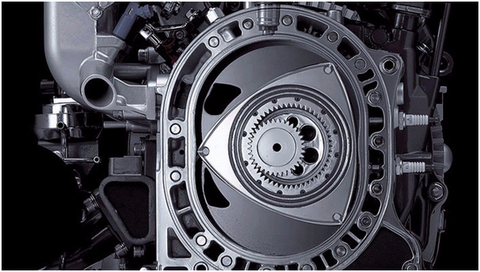
In the first few years after its invention more than 60 years ago, the Wankel rotary engine was considered the pinnacle of driving technology. Hardly any vibrations, smooth engine operation, and sufficient power encouraged many manufacturers to experiment with the rotary piston engine.
However, it never prevailed. High consumption, technical susceptibility, and last but not least the further development of other drive concepts meant that only a few models were successful.
In 2021 Mazda dared a new attempt. In the past, the Japanese were the only major manufacturer to rely on Wankel engines, for example in the RX-8 (until 2012). Now they are using a newly developed Wankel engine again. Mazda is now ringing in a renaissance with the MX-30.
The Wankel engine offers a number of advantages. Despite this, it never really caught on. Here you can find out exactly how the Wankel principle works and what advantages and disadvantages it has.
History of Wankel Engines

Felix Heinrich Wankel was a tinkerer and automotive enthusiast. He had been working on a new engine principle since the 1930s. Therefore, the Wankel engine (also known as the rotary engine) was invented in 1954 by the German mechanical engineer as an alternative to the classic reciprocating engine.
Felix Heinrich Wankel designed the DKM32 rotary piston machine and in 1954 he invented the rotary piston engine. After some technical improvements by engineer Hanns Dieter Paschke in 1957, the Wankel engine was presented to experts and the press for the first time in 1960 at an event organized by the Association of German Engineers (VDI) in Munich.
In the 1960s, Wankel engines were on everyone's minds in the car and motorcycle industry due to their simplicity, smooth running, and high power density. In August 1967, NSU Motorenwerke AG attracted a great deal of attention for its state-of-the-art NSU Ro 80 passenger car, which was powered by a 115 hp two-piston rotary engine. It was the first German "Car of the Year" in 1968.
The inventor died in 1988 – without ever having driven a long distance in any car with a Wankel engine. Due to his extreme short-sightedness, Wankel did not even have a driver's license.

Over the next few decades, numerous major automobile manufacturers signed licensing agreements to develop Wankel rotary engines, including Ford, Toyota, Mercedes-Benz, Porsche, Rolls-Royce, and Mazda.
After further improvements to the engine, including solving the apex compression problem, Mazda successfully used rotary engines in its RX series sports cars until 2012. The technological advance of Wankel engines in the automotive industry was highlighted in the 1991 24 Hours of Le Mans when a car powered by the 4-rotor Mazda 26B engine won the prestigious competition.
The continuously further developed Wankel rotary piston engines are nowadays used in motorcycles, racing cars, airplanes, small ships, and power generators. The next stage of development relates to the application of these drives in the coming era of low-emission, climate-neutral, reliable, and affordable energy supply.
How Does a Rotary Engine Work
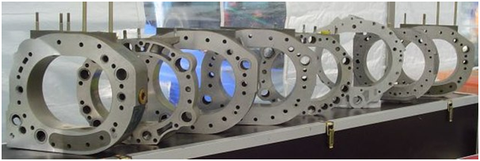
The Wankel engine is an internal combustion engine in which one or more triangular rotary pistons convert the pressure generated when the fuel-air mixture is combusted into kinetic energy. The idea was very creative.
Instead of going up and down like in a reciprocating engine, the piston in a Wankel engine rotates in a circle. Instead of redirecting the lifting movement into rotary movement via a separate crankshaft, this step is omitted. The combustion energy is converted directly into drive energy without detours.
In addition, there are no valves for gas exchange. This makes the construction lighter and more compact. This also eliminates annoying vibrations. A smooth, turbine-like run is created.
The quantities of gas transported in the spaces between the rotor flanks and the casing alternately pass through four different phases: intake phase, compression phase, ignition phase, and discharge phase. These stages are called strokes and make the Wankel engine a four-stroke engine, similar to the Otto piston engine.
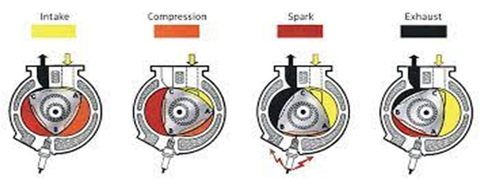
The Pennsylvania State University
Intake - Suction
During this phase, a drop in pressure caused by the movement of the rotor sucks the fuel-air mixture into the cold chamber. The rotation of the rotor pushes the mixture into the second stroke of the cycle.
Compression
As the piston continues to rotate, the volume trapped between the rotor and housing decreases, compressing the fuel-air mixture.
Ignition
When the mixture volume is minimal, one or more spark plugs initiate combustion, causing a rapid increase in pressure and temperature. The sudden expansion of the now gaseous fuel mixture continues to rotate the rotor and eccentric.
Discharge - Exhaust
The expanding exhaust gases leave the chamber through the exhaust port opened in the fourth stroke. As the piston continues to rotate, the exhaust port is closed while the intake port opens again to begin a new cycle.
Advantages and Disadvantages of Wankel Engines

Due to their construction, Wankel engines are much lighter, more compact, and simpler than classic piston drives. There are no reciprocating pistons, cranks, valves, rods, or other troublesome, complex parts.
Rotary engines contain only three moving parts, making them more reliable, durable, and easier to maintain than traditional internal combustion engines. In addition, these moving parts continuously rotate in one direction, resulting in higher operating speeds, simplified balancing, and low vibration.
Thanks to their unprecedented weight-power and size-power ratios, Wankel engines are used in a variety of applications. As soon as the exhaust gas problem is solved, the Wankel will show its real advantages: hardly any vibrations, smooth engine operation, and sufficient power.
One of the disadvantages of rotary engines is their low thermal efficiency. The long, thin, and moving combustion chamber results in relatively slow and incomplete combustion of the fuel-air mixture. This results in higher carbon emissions and lower fuel efficiency compared to spark-ignition engines. However, this problem becomes an advantage with the switch to hydrogen operation.
Another weakness of Wankel engines relates to the rotor and apex seal. Poor sealing between the edges of the rotor and the casing - for example, due to wear or insufficient centrifugal force in the lower speed ranges - can lead to combustion gas escaping into the next chamber.
Since the combustion only takes place in one section of the engine, there is a large temperature difference in two separate chambers. The resulting different expansion coefficiency of the materials involved leads to a suboptimal rotor seal. Also, oil consumption is also an issue as oil must continuously be injected into the chamber to improve lubrication and keep the rotor sealed.
Due to its principle, the Wankel engine has a higher fuel consumption than a reciprocating engine, which was the biggest failure on its part. It was also really unreliable, legend has it that Ro-80 drivers greet each other with raised fingers and each finger stands for a replacement engine.
Cars with Wankel Rotary Engines
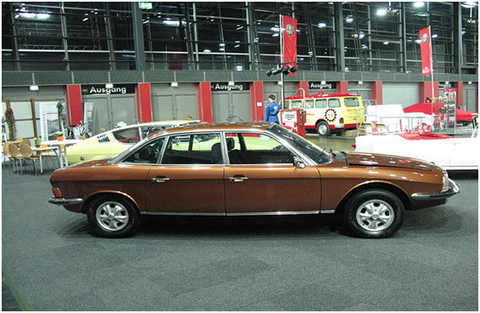
In the past 60 years, several manufacturers have tried to get this special engine running. Especially NSU (later Audi), Mazda, General Motors, Toyota, and Mercedes experimented a lot, but also MAN, Rolls-Royce, Porsche, Nissan, Suzuki, Ford, Kawasaki, and Yamaha acquired licenses from Wankel himself.
The engine principle was well known in Germany in 1967 with the NSU Ro 80 (Ro for rotary piston engine), and in Japan with the Mazda 110 Cosmo Sport. This was followed by experimental concept vehicles such as the Citroen M35 or the Mercedes C111.
Mercedes C111’s four-rotor Wankel engine delivered 350 hp and accelerated the test vehicle to up to 180 mph. Even with that performance, the drive never went into series production. Mazda was the only company that developed this engine further and kept using the tech until 2012. The Japanese manufacturer sold more than a million vehicles with this technology.
The 110 Cosmo Sport was followed in 1968 by the R100, and a year later by the R130. RX series kicked off afterward with the development of the RX-2. RX-3 came in 1971 and was followed by the RX-4 the next year, 1972.
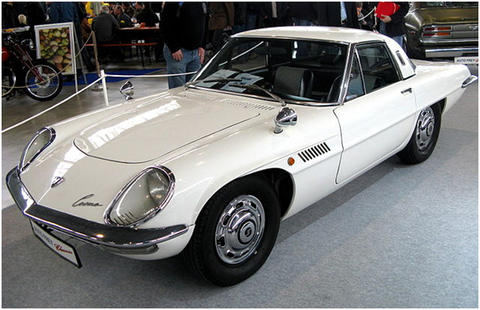
In 1985, Mazda started building the RX-5 and also started importing them outside of Japan with the Wankel engines. With the RX-7, Mazda finally made a breakthrough outside of Japan and sold out all the units that were sent to Europe.
The sports coupe sold well over the years, was revised several times, and only received a successor in the RX-8 in 2002. The performance of the two-chamber engine ranges from 192 to 231 hp. This allows the Mazda to travel at speeds of up to 150 mph.
Racing Success of the Wankel Engine
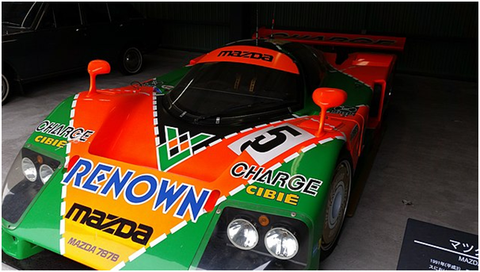
Exotic but successful. The Mazda 787B with a rotary piston engine won the famous 24 Hours of Le Mans in 1991. Its four-rotor Wankel engine with a chamber volume of 2.6 liters draws around 700 hp from up to 9,000 revolutions thanks to high speeds – without a turbocharger.
Does the Wankel Have a Future?
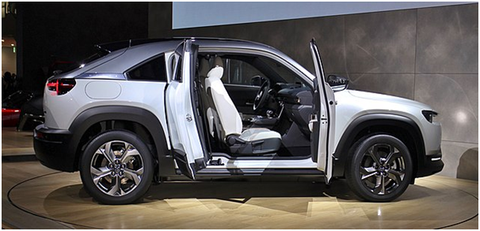
The future of the Wankel engine is expected to start in 2022. Mazda is still seemingly the only car company that sticks to technology. The new and so far only fully electric SUV Mazda MX-30 will soon receive a range extender that works according to the Wankel principle.
Like a combustion engine, the Wankel engine will then charge the battery of the MX-30 and thus extend the range. Mazda recently filed a new patent in which three electric motors, two power storage devices (capacitors), and an internal combustion engine that might be a Wankel to work together.
Resources
- https://en.wikipedia.org/wiki/Wankel_engine
- https://en.wikipedia.org/wiki/Mazda_Wankel_engine
- https://www.carthrottle.com/post/engineering-explained-why-the-rotary-engine-had-to-die/
- https://mechanicalboost.com/wankel-engine/
- https://www.popularmechanics.com/cars/car-technology/a7103/mazda-wankel-rotary-engine/
- https://www.engineerine.com/2021/08/why-are-automakers-no-more-producing.html
- https://www.history.com/this-day-in-history/rotary-engine-inventor-felix-wankel-born
- https://www.britannica.com/technology/Wankel-engine
- https://www.roadandtrack.com/new-cars/car-technology/a25684786/how-wankel-rotary-hydrogen-engine-works-mazda-rx-8/
- https://www.sciencedirect.com/topics/engineering/wankel-engines
- https://auto.howstuffworks.com/rotary-engine.htm
- https://gomechanic.in/blog/return-of-the-rotary-engines/
- https://www.mcnallyinstitute.com/why-did-the-wankel-engine-fail/
- https://www.motorbiscuit.com/rotary-engine-reliability-fixes/
- https://nationalspeedinc.com/advantages-and-disadvantages-of-a-rotary-engine/
Tankut Basar
Tankut Basar is an ARA (American Rally Assoc.) Racing Driver and an FIA Bronze Category License Holder. His passion for driving began with karting like most racers. He started racing internationally at the age of 22. Tankut loves everything car-related and will keep enjoying the drive until the end.



